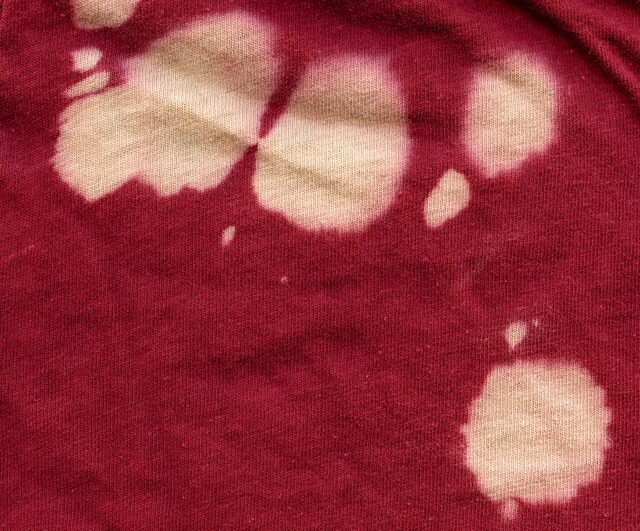DO I NEED TO PREP MY ITEM BEFORE DYEING?
At CullaChange, we adore customers that stop to ask this question! It is sometimes assumed that we are similar to a dry cleaner - bring your items in dirty and they are returned dyed and clean. Unfortunately, that’s not quite the case and can affect the success of your item dyeing well - though, we do share our office with a laundry, who could clean your items for you before they come to us! Surprisingly, there are actually a few things to consider before dyeing:
Cleaning ~ your fabric should be as clean as possible before dyeing, as any impurities - food, oil, deodorant - will cause the dye to attract to them and dye darker in that area. Obviously, if there is a stain that can’t be removed, we don’t expect you to do much about it, however you will be limited in your colour choice, as you will need to cover the stain with a dark colour. A note on stains: if your stain is bleach, chlorine or peroxide, make sure you have rinsed the fabric well, as these chemicals continue to deteriorate the fabric, and prolonged exposure can result in a hole developing. Furthermore, paint, nail polish, glue, or white-out type substances won’t cover with dye. These substances coat the fibres blocking the dye being absorbed. Dry cleaning is recommended, or if the fabric is hardy, you could try to dissolve the mark with solvents first, before dyeing.
Holes or tears ~ any areas that are torn or have a hole will need repairing or securing before dyeing. The hot water causes fibres to swell, which causes them to unravel and fray, causing more damage.
Buttons ~ If your item has plastic buttons, they will most likely dye as they are generally made of nylon or polyester. If your buttons are shell, metallic, wooden, or special in any way, we recommend you take them off before dyeing. The heat used in dyeing can cause buttons to pop, or crack, and when this happens there is no way for us to salvage them, they go down the drain, and we don’t replace them.
Leather labels/trim ~ any leather or suede embellishments and labels (think fashion brand labels at the back of jeans waistbands) must be removed before dyeing. True leather and suede shrinks and goes hard in hot water (ie the dyeing process), however faux leather and suede can be left on but will take some colour.
The small claw hooks that hold rhinestones can catch on loose fibre and be pulled off.
Beading, sequins, tassels & fringing ~ as with buttons, plastic beading and sequins will dye, sometimes darker. Any beading or diamontes that are glued on may come unstuck and fall off in dyeing, which means they will be lost. Beading that has small claw hooks, or tassel fringing will need to be covered with protective fabric before dyeing to stop them catching or tangling. We can give you a quote for this when we see your item.
Shoulder pads/ bust padding ~ the foam used in padding can distort and misshape in dyeing. For this reason we recommend it being removed or added stitching to secure the shape.
We will advise and assists you with any preparation needs you may have.
For more information about our service or to contact us, click here.



